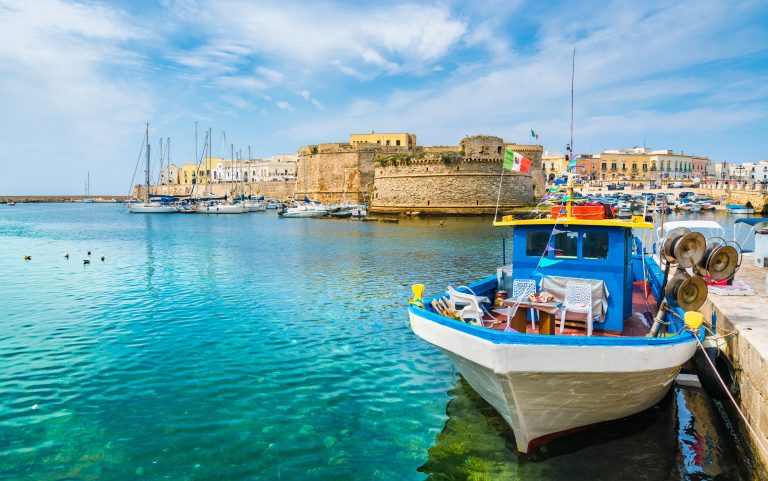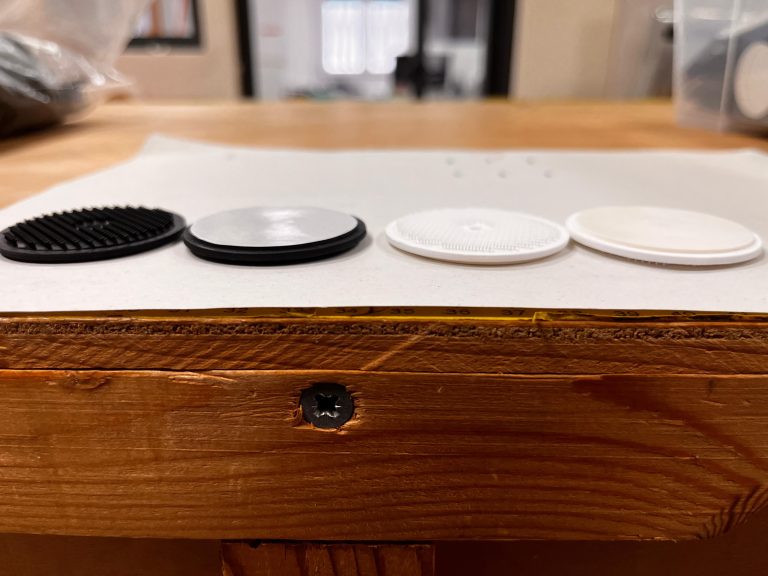 Even with the boat stopped you can hear the background noise of conditioning plants or electrical generators. Sound is propagated in two ways: through the air and structurally. In the former case the sound waves produced by source pass through the walls and, in part, spread through the neighbouring environments. Even spaces below doors or windows, electrical sockets or conditioning ducts help transmit it. Structural propagation is mainly through vibration or stress that makes bodies vibrate. The noise in these cases can reach environments further away than that transmitted through the air. So to enjoy peace and quiet on board, it may be necessary to sound insulator environments and use antivibration systems, as is done for buildings for cars. A team that designs solutions of this kind is Materiacustica and Acustica Parati.
Even with the boat stopped you can hear the background noise of conditioning plants or electrical generators. Sound is propagated in two ways: through the air and structurally. In the former case the sound waves produced by source pass through the walls and, in part, spread through the neighbouring environments. Even spaces below doors or windows, electrical sockets or conditioning ducts help transmit it. Structural propagation is mainly through vibration or stress that makes bodies vibrate. The noise in these cases can reach environments further away than that transmitted through the air. So to enjoy peace and quiet on board, it may be necessary to sound insulator environments and use antivibration systems, as is done for buildings for cars. A team that designs solutions of this kind is Materiacustica and Acustica Parati.
Materiacustica and Acustica Parati: specialists in sound and vibrations
The “city of bicycles”, besides being famous for its art and history, also has a centre of excellence in acoustics, at national and international level. It is the acoustics laboratory of the Department of engineering at the University of Ferrara, which researchers industrial applications. Starting from the know-how acquired in the acoustic group of this department, in 2004 Materiacustica Srl was formed as a spin-off from the University. The university was a partner in the company until last year, following modifications to the rules governing companies with public administrations are stakeholders. Thanks to an agreement with the Department of engineering, however, Materiacustica can continue to use all the University laboratories and also use a further external site. In this way the company can supply acoustic products and services to public and private bodies, as well as offering itself as a partner for applied research, design, consultancy and training.
One of the characteristics of the group is its all-round competence in all sectors of acoustics: from construction to architecture, from materials to environments. From the acoustic group of the Ferrara Department of engineering also come the competences of the Acustica Parati company. We looked round the laboratories of the Department where Paolo Bonfiglio, Senior Vibro-Acoustic Consultant and Vice-President of Materiacustica srl, and Andrea Farnetani, president of Materiacustica and Senior Vibroacoustic Consultant, explained their work. With them was also Linda Parati, Senior Vibro-Acoustic Consultant, founder and owner of Acustica Parati. But first let’s take a look at the team’s main activities.
Products and activities focusing on acoustics
The objectives that Materiacustica and Acustica Parati pursue in the acoustics and vibration sector are numerous, and their target is both public bodies and private companies. But first they develop innovative analytical methods, then passed to design and development, also of measuring apparatus. In addition to researching the development of materials and devices of vibroacoustic interest, the company also offers assistance and consultancy in all areas of acoustics. Given its close links with the University of Ferrara, there is obviously also a component dedicated to training and teaching in acoustics and vibration. As mentioned, the competences of Materiacustica and Acustica Parati cover many sectors. A main one is the materials sector, involving the characterisation of materials and the modelling of their vibroacoustic behaviour, in fact the name of the company comes from its decade of experience in this field.
In addition to handling research and development, Materiacustica and Acustica Parati also work with other companies to make and optimise innovative materials. Other important sectors are construction and architectural acoustics, musical and psychoacoustics, plus environmental acoustics with particular attention to railways and traffic. Through the laboratories of Ferrara University the team also supplies solutions to companies asking for the analysis of the sound emission of their products or the development of new and quieter prototypes. Last but not least, Materiacustica develops and markets devices and measurement systems with software that is dedicated and tailor-made to customer requirements. One of the most recent fields the two companies are focusing on, thanks also to important collaboration, is the nautical field.
Optimised acoustics, from land to sea
The idea of entering the nautical sector came from collaboration between Materiacustica and Acustica Parati. The two companies decided to develop new approaches and methods, are in line with the growing request for the acoustic optimisation of a number of vessels. Says Linda Parati: “We start from solid know-how acquired with railways, motorways, buildings and plant, where there are problems you can also find on board a ship. It is a stimulating challenge because we can transfer 20 years of experience from the land to the sea. It’s not just the engine rooms, but the ship as a whole.” Materiacustica and Acustica Parati handle all the phases, from design to installation, in close collaboration where each company maintains its own identity. The Ferrara company first handles materials with research and development and design. “It’s not just a matter of checks and testing. What we want to do is to supply an important contribution to nautical acoustics, improving the state-of-the-art,” says Paolo Bonfiglio. “Over the years we have developed know-how for modelling materials that are used to improve vibroacoustic comfort in closed environments, and we are ready to apply them to ships.” So in the Ferrara laboratories materials are analysed and characterised, after which Linda Parati gets involved to think about how to use them and the advantages and limitations of the product. This is a job that must be done step-by-step, with constant interaction with customers who have several requirements and requests. The laboratories are fundamental for simulations that make it possible to “understand the intrinsic behaviour of a material in conditions very similar to real ones so as to have optimal management in the installation phase,” says Linda. She also explains another advantage offered by the laboratories, which is to establish with the customer the desired acoustic quality. “It’s one thing to go to a customer and show him certain acoustic values, but it’s something else to take him into one of the acoustic test chambers and let him listen to sounds and noises. Once we know what he likes, we know our objectives in design terms.”
“For us it’s important to understand the connection between objective data and subjective perception,” says Paolo, “that is the connection between the acoustic parameters that come out in the laboratory and the customer’s taste.”
A special laboratory: the anechoic chamber
 One of the most suggestive laboratories we visited was the anechoic chamber, which thanks to walls clad with thousands of sound absorbing wedges eliminates almost all sound reflections. Paolo Bonfiglio explained the characteristics of this chamber, which is used especially for tests in the automotive and industrial sectors. “One of the things that makes the anechoic chamber particularly high performance compared with other similar laboratories in Italy is the very low cut-off frequency, the sound frequency above which you have no return from the environment. To achieve this result we designed 1.8 m of polyester fibre with a particular geometric shape, with 1 m of space between the heir and the panels and then 30 cm of concrete. In this way you create an impressive insulation from the outside, which allows us to measure accurately the source of the sound. Since we have a chamber that can absorb completely everything that is emitted by a source while eliminating the role of the environment, we can perform an ad hoc measurement.”
One of the most suggestive laboratories we visited was the anechoic chamber, which thanks to walls clad with thousands of sound absorbing wedges eliminates almost all sound reflections. Paolo Bonfiglio explained the characteristics of this chamber, which is used especially for tests in the automotive and industrial sectors. “One of the things that makes the anechoic chamber particularly high performance compared with other similar laboratories in Italy is the very low cut-off frequency, the sound frequency above which you have no return from the environment. To achieve this result we designed 1.8 m of polyester fibre with a particular geometric shape, with 1 m of space between the heir and the panels and then 30 cm of concrete. In this way you create an impressive insulation from the outside, which allows us to measure accurately the source of the sound. Since we have a chamber that can absorb completely everything that is emitted by a source while eliminating the role of the environment, we can perform an ad hoc measurement.”
Some sources that can be analysed are for example an engine component or a compressor that goes into the engine room of the boat. Linda explains that “in the anechoic chamber you can start working with different materials, also calling in the engineers that designed them, and evaluate an initial intervention to reduce noise on the source, even before working on propagation.” This research laboratory is mainly used for research, certification and experiments, measuring noise and reflective and diffusion capacity. But given its particular aesthetic fascination, the chamber has also been used to organise theatrical events and concerts, as well as a set for films and documentaries. The structure has also earned fame internationally, following the video “The Sounds of Massimo Bottura’s Lasagna” shot for the New York Times and recordings for a documentary presented at the Venice film Festival.







